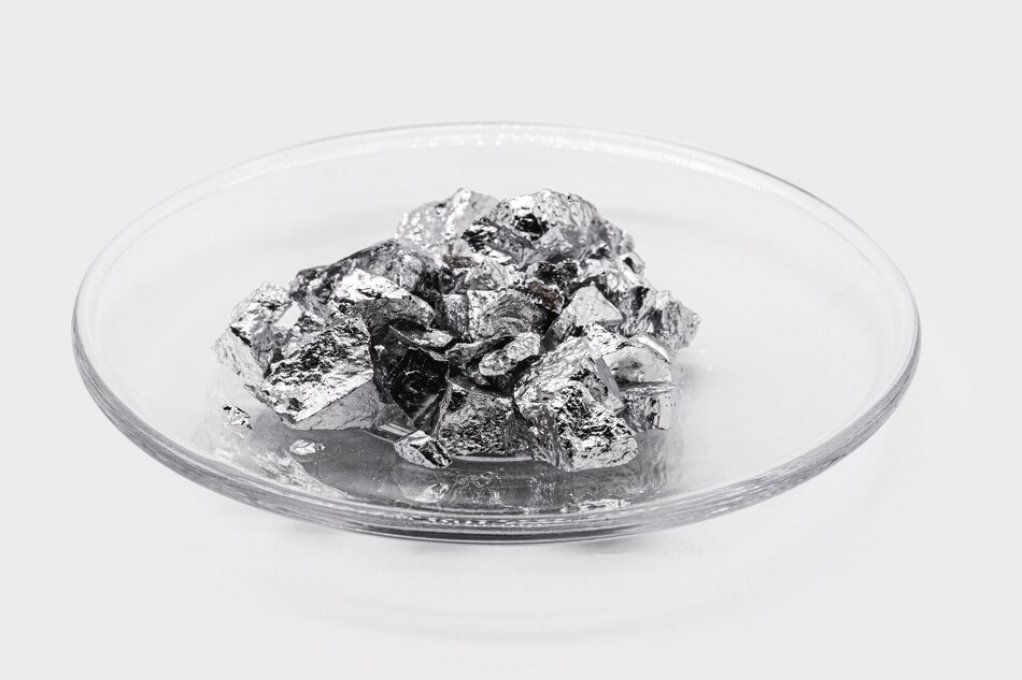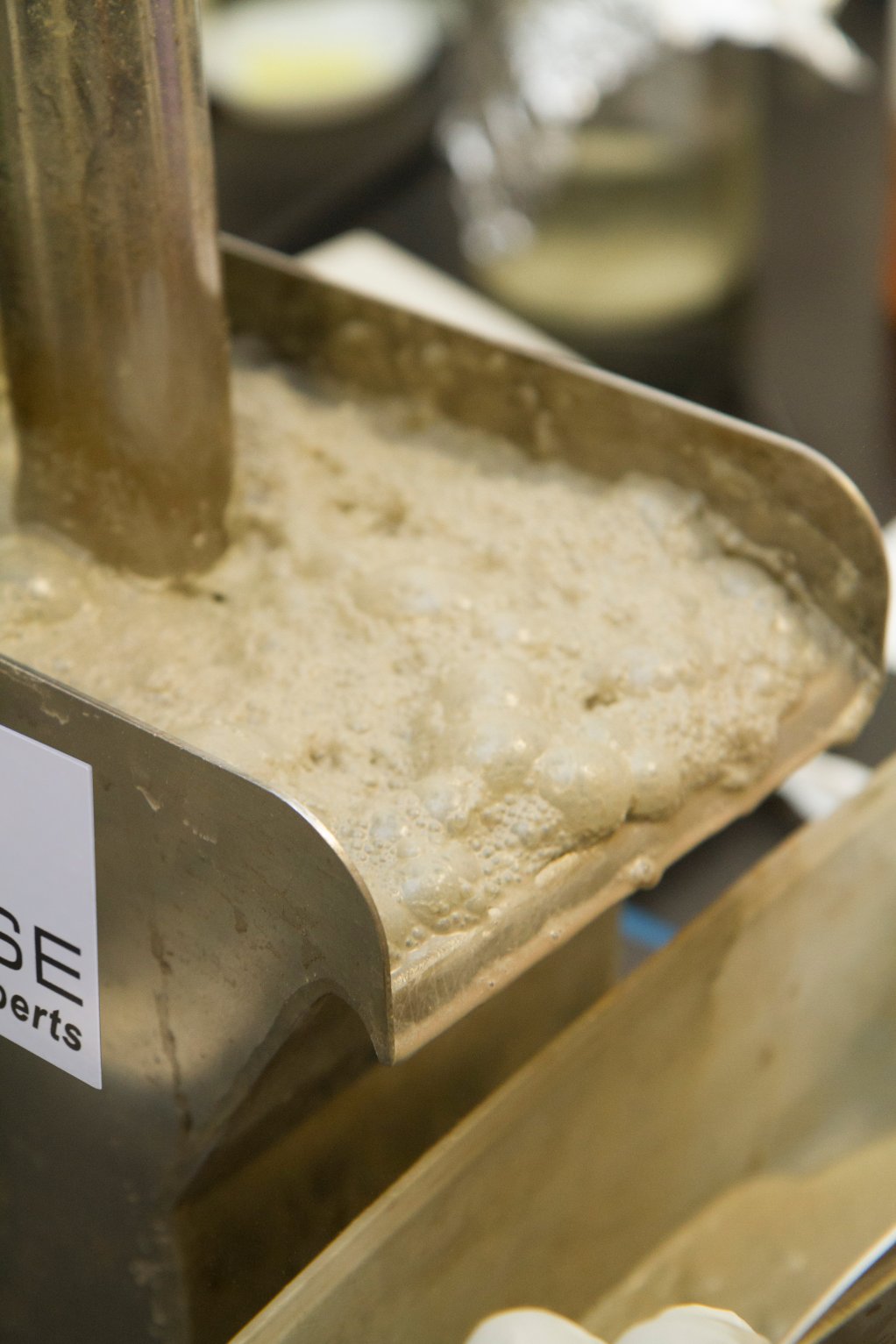PGM reagent developed



FULL SUPPORT Axis House provides technical support by assessing identified problems on site
INDUSTRIAL MINERALS Axis House's hydroxamate collector range has shown major improvements in tarnished PGMs recovery
To overcome challenges encountered during the platinum group metals (PGMs) processing stage, reagent solution company Axis House has developed innovative reagent suites to be used with oxidised and tarnished ores.
The conventional sulphide flotation processing of PGMs requires that the minerals have a sulphide surface to attach to and be collected from; however, this is not the case with tarnished material, explains Axis House business development metallurgist Travis Myburgh.
In some cases, light milling can polish the surfaces of PGM ores, while in other cases, more unique chemistries are required, he adds.
Axis House's hydroxamate collector range has shown major improvements in tarnished PGMs recovery. The range uses the chelation mechanism, as opposed to attaching to PGM ores like a conventional sulphide collector, making it appropriate for tarnished and oxidised PGMs.
“A flotation is a balancing act. You need to recover enough valuable minerals to remain profitable. However, you also need to upgrade the feed ore to an acceptable concentration so that it can be processed efficiently downstream,” says Myburgh.
Axis House specialises in optimising reagent suites for this purpose to maintain the balance required in flotation and the factors that influence it.
Axis House focuses on understanding the problems that a PGMs processing plant will likely encounter, and customises its approach accordingly.
Thereafter, the company considers the specific chemistry and interaction of the mineral surfaces using its range of products to achieve specific processing targets.
Myburgh explains that improved reagent chemistries can collect tarnished or oxidised ores using a different collection mechanism, making it easy to implement into an existing plant that was designed for sulphide flotation, without any, or minimal, capital expense.
However, a proper assessment of the PGMs’ surface chemistry is required, and it may be appropriate to dose the sulphide collectors in the initial stages of the flotation circuit and the hydroxamate collectors down the flotation bank once all the sulphide minerals have been removed.
“This enables the hydroxamates to focus only on the ‘problematic’ minerals. However, in some cases, dosing the sulphide collectors and hydroxamates upfront yields the best results,” he adds.
Further, Axis House’s AM810, with a long history in oxide copper flotation, has recently been shown, through academic and in-house test work, to also have positive effects on plants that treat tarnished ore material.
In some cases, there are also some changes in froth structure when using advanced chemistries, which must then be optimised in conjunction with the currently used reagents to yield the best results.
Custom Blend
Axis House's frother customisations reduce the entrainment of chrome in some PGM ores.
Chromite is hydrophilic – it does not attach to the air bubbles in froth flotation, but is rather entrained in the water. Thus, the selection of a frother that can reduce this water entrainment can have positive effects on the amount of chrome entrained in the final concentrate.
Optimising the frother will create a balance between sufficiently carrying the valuable PGMs from the pulp phase to the froth phase, while enabling the water-entrained chromite to drop back into the pulp phase, Myburgh explains.
A frother is used not only to create a froth layer that can hold the targeted valuable minerals to report to the concentrate but also reject any gangue minerals that may become entrained in the froth layer, he adds.
Axis House group subsidiary Hydrofroth creates customised blends on site to address these concerns.
Hydrofroth metallurgists analyse the froth structure and create a frother that can assist with the specific requirements of the mine and the material it produces.
This can range from an improvement in mass pull, or be an improvement in concentrate quality through entrained-gangue rejection, which is important when managing entrained chrome in some PGM ores, Myburgh elaborates.
Axis House provides technical support on the application of its reagents by assessing identified problems on site. Ore samples are collected and sent to the company’s fully functional metallurgical laboratory, in Hout Bay, Cape Town, and the results are used to recommend the best reagent suite for that process.
Following this, the trial phase starts, with onsite metallurgists providing extensive onsite technical support using independent dosing equipment so that normal plant operations are not dis- rupted, Myburgh concludes.
Comments
Press Office
Announcements
What's On
Subscribe to improve your user experience...
Option 1 (equivalent of R125 a month):
Receive a weekly copy of Creamer Media's Engineering News & Mining Weekly magazine
(print copy for those in South Africa and e-magazine for those outside of South Africa)
Receive daily email newsletters
Access to full search results
Access archive of magazine back copies
Access to Projects in Progress
Access to ONE Research Report of your choice in PDF format
Option 2 (equivalent of R375 a month):
All benefits from Option 1
PLUS
Access to Creamer Media's Research Channel Africa for ALL Research Reports, in PDF format, on various industrial and mining sectors
including Electricity; Water; Energy Transition; Hydrogen; Roads, Rail and Ports; Coal; Gold; Platinum; Battery Metals; etc.
Already a subscriber?
Forgotten your password?
Receive weekly copy of Creamer Media's Engineering News & Mining Weekly magazine (print copy for those in South Africa and e-magazine for those outside of South Africa)
➕
Recieve daily email newsletters
➕
Access to full search results
➕
Access archive of magazine back copies
➕
Access to Projects in Progress
➕
Access to ONE Research Report of your choice in PDF format
RESEARCH CHANNEL AFRICA
R4500 (equivalent of R375 a month)
SUBSCRIBEAll benefits from Option 1
➕
Access to Creamer Media's Research Channel Africa for ALL Research Reports on various industrial and mining sectors, in PDF format, including on:
Electricity
➕
Water
➕
Energy Transition
➕
Hydrogen
➕
Roads, Rail and Ports
➕
Coal
➕
Gold
➕
Platinum
➕
Battery Metals
➕
etc.
Receive all benefits from Option 1 or Option 2 delivered to numerous people at your company
➕
Multiple User names and Passwords for simultaneous log-ins
➕
Intranet integration access to all in your organisation




















